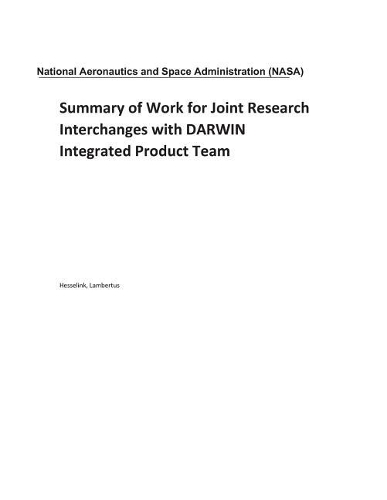
Summary of Work for Joint Research Interchanges with Darwin Integrated Product Team
Series:
The intent of Stanford University's SciVis group is to develop technologies that enabled comparative analysis and visualization techniques for simulated and experimental flow fields. These techniques would then be made available un- der the Joint Research Interchange for potential injection into the DARWIN Workspace Environment (DWE). In the past, we have focused on techniques that exploited featu
NaN
VOLUME
English
Paperback

The intent of Stanford University's SciVis group is to develop technologies that enabled comparative analysis and visualization techniques for simulated and experimental flow fields. These techniques would then be made available un- der the Joint Research Interchange for potential injection into the DARWIN Workspace Environment (DWE). In the past, we have focused on techniques that exploited feature based comparisons such as shock and vortex extractions. Our current research effort focuses on finding a quantitative comparison of general vector fields based on topological features. Since the method relies on topological information, grid matching an@ vector alignment is not needed in the comparison. This is often a problem with many data comparison techniques. In addition, since only topology based information is stored and compared for each field, there is a significant compression of information that enables large databases to be quickly searched. This report will briefly (1) describe current technologies in the area of comparison techniques, (2) will describe the theory of our new method and finally (3) summarize a few of the results. Hesselink, Lambertus Ames Research Center ...
Price Comparison [India]
In This Series
Bestseller Manga
Trending NEWS




















